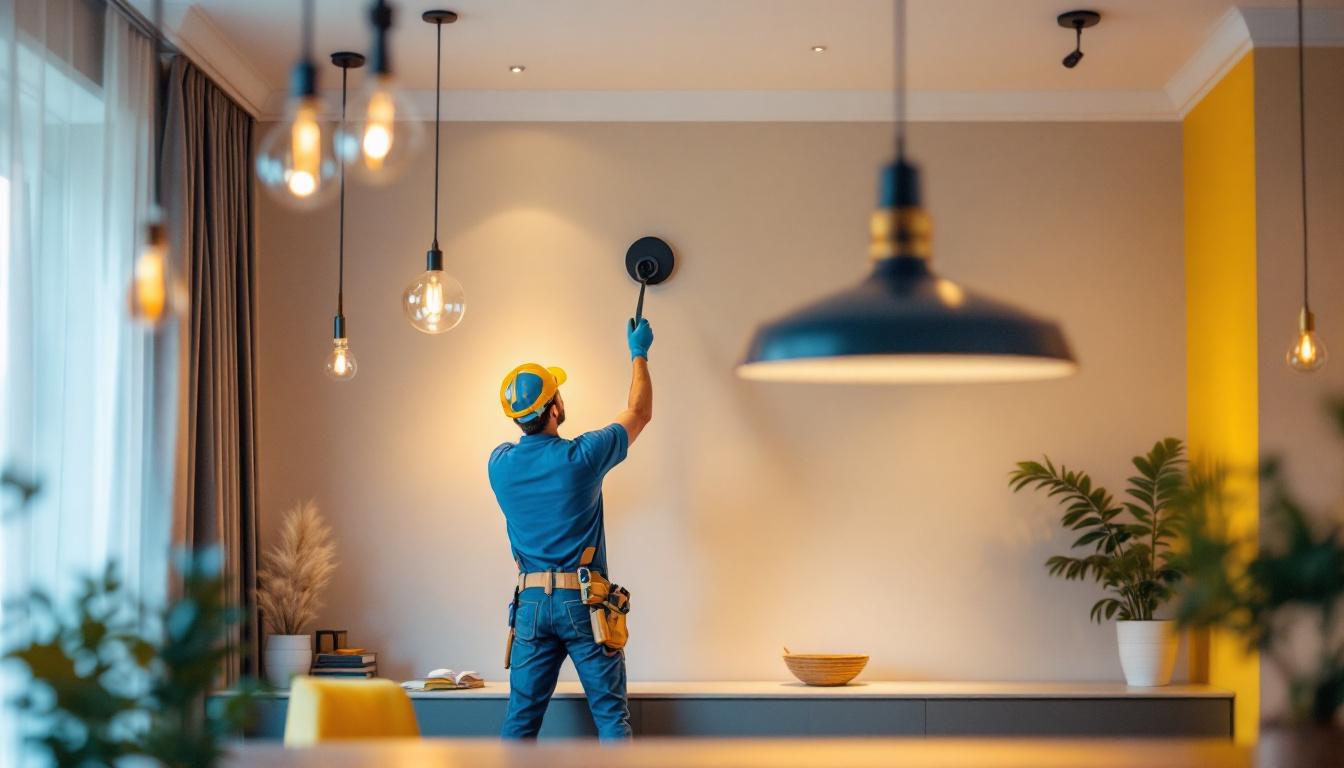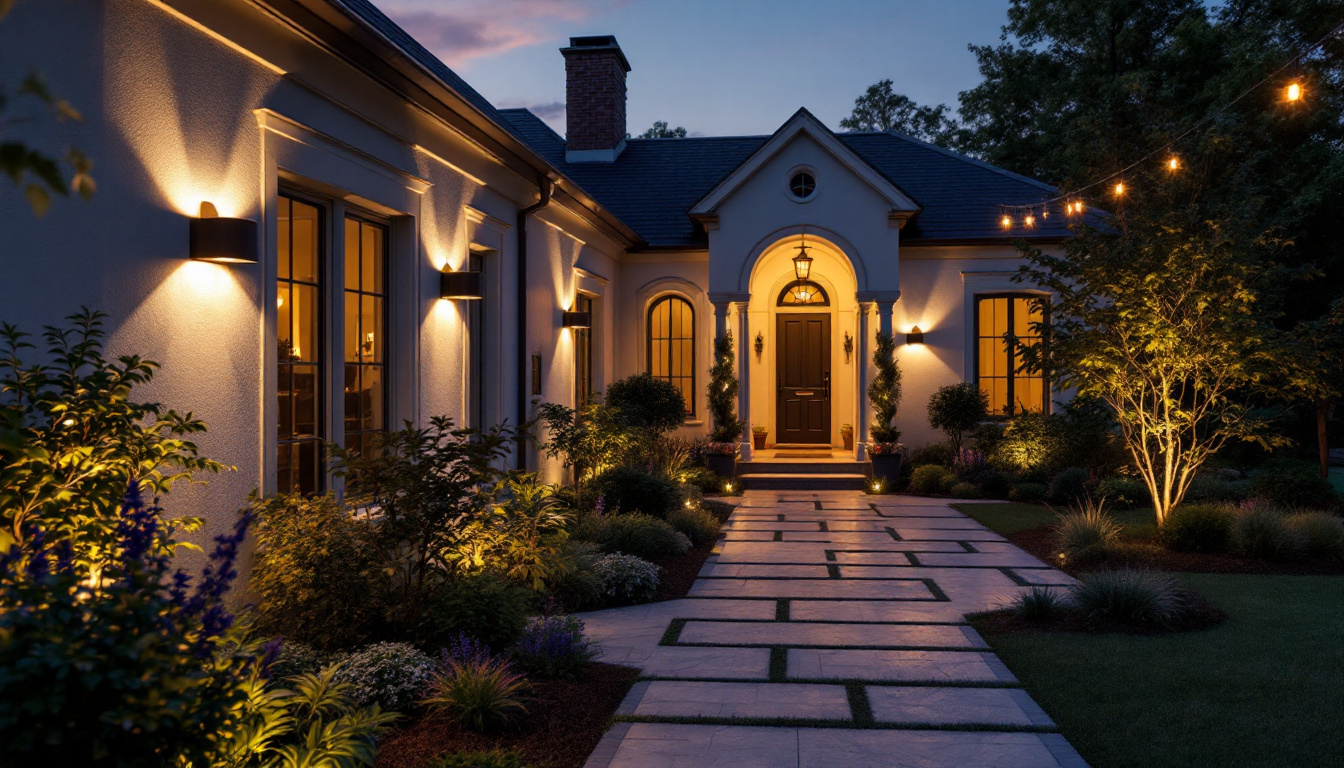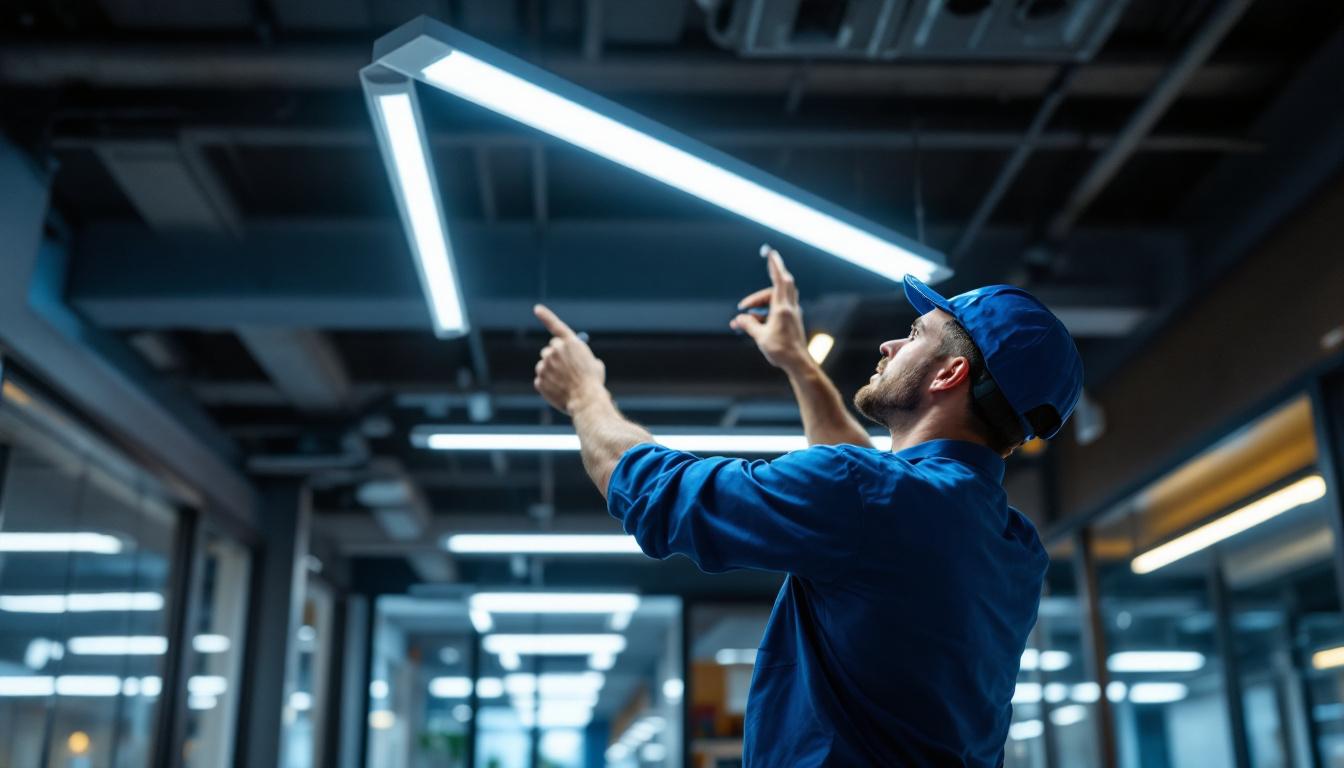
direct wire LED tubes are a popular choice for modern lighting solutions, particularly in commercial and industrial settings. Unlike traditional fluorescent tubes, which require a ballast to operate, direct wire LED tubes connect directly to the electrical supply. This simplicity not only enhances energy efficiency but also reduces maintenance costs over time. The straightforward installation process allows for quicker upgrades and replacements, making it an attractive option for businesses looking to modernize their lighting without extensive downtime.
However, with the advantages come challenges. Lighting contractors must be well-informed about the specific requirements and installation processes associated with these fixtures to avoid costly mistakes. Understanding the nuances of direct wire LED tubes can lead to successful projects and satisfied clients. Additionally, the shift from fluorescent to LED technology requires a mindset change; contractors must be prepared to educate clients on the long-term benefits and potential savings associated with this transition, fostering a more informed customer base.
The primary benefit of direct wire LED tubes is their energy efficiency. By eliminating the ballast, these tubes can reduce energy consumption significantly. Additionally, they offer longer lifespans compared to traditional fluorescent options, which translates to lower replacement costs. This longevity not only benefits the bottom line but also contributes to sustainability efforts, as fewer tubes end up in landfills over time.
Moreover, direct wire LED tubes provide better light quality, often with improved color rendering. This is particularly important in settings where accurate color representation is critical, such as in retail or art galleries. The ability to customize brightness and color temperature further enhances their appeal in various applications. For instance, in a restaurant setting, warmer color temperatures can create a cozy atmosphere, while cooler temperatures may be more suitable for office environments, promoting alertness and productivity. The versatility of direct wire LED tubes allows businesses to tailor their lighting to meet specific needs and enhance the overall ambiance.
Despite their advantages, many contractors encounter pitfalls during the installation of direct wire LED tubes. One common mistake is failing to assess the existing wiring and fixtures. It is essential to ensure compatibility with the LED tubes being installed to avoid issues such as flickering or complete failure. This preliminary evaluation can save time and resources, ensuring that the installation process goes smoothly and efficiently.
Another frequent error is neglecting to follow the manufacturer’s instructions. Each product may have specific requirements regarding wiring and installation, and overlooking these can lead to performance issues. Proper training and familiarization with the product specifications can mitigate these risks. Additionally, staying updated on the latest advancements in LED technology can empower contractors to make informed decisions, ultimately enhancing their reputation as knowledgeable professionals in the field. Engaging in continuous education and attending industry workshops can also help contractors stay ahead of potential challenges and provide the best service to their clients.
Selecting the appropriate direct wire LED tube for a project is crucial. The right choice can enhance the overall effectiveness of the lighting system and ensure client satisfaction. Various factors come into play when making this decision, including the intended application, desired brightness, and energy efficiency.
Understanding the specific needs of the application is the first step in choosing the right LED tube. For instance, areas requiring high visibility, such as warehouses or manufacturing facilities, may benefit from high-output tubes. Conversely, spaces designed for ambiance, like restaurants or lounges, may require softer lighting options.
Additionally, considering the layout of the space is vital. Longer tubes may be more effective in expansive areas, while shorter tubes can be ideal for smaller or more intricate installations. Assessing the dimensions and function of the space will guide the selection process. Furthermore, it’s important to think about the color temperature of the LED tubes. Cooler temperatures (5000K-6500K) are often preferred in work environments to promote alertness and productivity, while warmer temperatures (2700K-3000K) create a cozy atmosphere, perfect for hospitality settings. This nuanced approach to color temperature can further enhance the functionality and aesthetic appeal of the lighting design.
Energy efficiency is a critical factor in selecting direct wire LED tubes. Look for products with high lumen output per watt, as this indicates better energy utilization. Many manufacturers provide energy efficiency ratings, which can help contractors compare options effectively.
Moreover, consider the potential for rebates or incentives associated with energy-efficient products. Many utility companies offer programs that reward the installation of energy-saving lighting solutions, which can significantly offset project costs. It’s also worth exploring the lifespan of the LED tubes; many high-quality options boast lifespans of 25,000 hours or more, which not only reduces replacement frequency but also minimizes maintenance costs over time. Additionally, some LED tubes come with advanced features such as dimming capabilities or smart technology integration, allowing for greater control over lighting conditions and further enhancing energy savings. These features can be particularly beneficial in environments where lighting needs may change throughout the day or during different operational phases.
Proper installation of direct wire LED tubes is essential to maximize their performance and lifespan. Following best practices not only ensures compliance with safety standards but also enhances the overall functionality of the lighting system.
Before beginning the installation, conducting thorough pre-installation checks is vital. This includes assessing the existing electrical infrastructure and ensuring it meets the requirements for direct wire connections. Additionally, checking for any potential hazards, such as damaged wiring or moisture issues, can prevent complications during installation.
Contractors should also verify that they have all necessary tools and materials on hand. This preparation can streamline the installation process and minimize delays, ensuring that the project stays on schedule.
Each manufacturer provides specific guidelines for the installation of their direct wire LED tubes. Adhering to these instructions is crucial for optimal performance and safety. This includes proper wiring techniques, securing the tubes correctly, and ensuring that the electrical connections are safe and reliable.
In addition, understanding the warranty conditions is important. Many warranties may be voided if the installation does not comply with the manufacturer’s specifications. This can lead to additional costs down the line if issues arise.
Even with careful planning and execution, issues may arise during or after the installation of direct wire LED tubes. Being prepared to address these common problems can save time and resources.
Flickering lights are one of the most common complaints associated with LED installations. This issue can stem from several factors, including incompatible dimmers, poor connections, or faulty tubes. To troubleshoot, contractors should first check the dimmer compatibility and ensure that it is rated for LED use.
If the dimmer is suitable, the next step is to inspect the connections. Loose or corroded connections can lead to flickering, so ensuring all wiring is secure is essential. If the problem persists, testing the tubes in a different fixture can help determine if the issue lies with the tube itself.
Inconsistent brightness can be another frustrating issue. This may occur due to variations in the electrical supply or the quality of the LED tubes. To address this, contractors should assess the voltage levels in the circuit and ensure they are stable. Fluctuations can lead to uneven lighting performance.
Additionally, selecting high-quality tubes from reputable manufacturers can help mitigate this issue. Cheaper alternatives may not provide consistent performance, leading to dissatisfaction among clients.
Maintenance is a crucial aspect of ensuring the longevity and performance of direct wire LED tubes. While these fixtures generally require less maintenance than traditional lighting options, regular checks and upkeep can prevent issues and extend their lifespan.
Conducting regular inspections of the lighting system is essential. This includes checking for signs of wear and tear, such as flickering lights or discoloration. Early detection of issues can prevent more significant problems down the line.
Additionally, cleaning the tubes periodically can improve light output. Dust and grime can accumulate on the surface, diminishing brightness. A simple cleaning routine can enhance the overall effectiveness of the lighting system.
As technology advances, upgrading to newer, more efficient LED tubes may be beneficial. Staying informed about the latest innovations in lighting technology can provide contractors with options that offer better performance and energy savings.
When replacing tubes, it is crucial to ensure compatibility with the existing fixtures and wiring. This attention to detail can prevent installation issues and ensure a smooth transition to the new products.
Direct wire LED tubes present an excellent opportunity for lighting contractors to enhance their projects with energy-efficient and high-quality lighting solutions. However, avoiding common pitfalls is essential to ensure successful installations and satisfied clients.
By understanding the benefits and challenges associated with direct wire LED tubes, selecting the right products, following best installation practices, and addressing potential issues proactively, contractors can navigate the complexities of lighting projects with confidence.
Ultimately, investing time in education and preparation will pay off, leading to successful installations and long-lasting relationships with clients. Embracing the advantages of direct wire LED tubes can transform lighting projects, making them more efficient, cost-effective, and visually appealing.
Ready to elevate your lighting projects with the efficiency and quality of direct wire LED tubes? Look no further than LumenWholesale for all your lighting needs. Our commitment to providing contractors with spec-grade lighting products at unbeatable wholesale prices ensures that you can deliver exceptional value to your clients. With free shipping on bulk orders and a selection that meets rigorous industry standards, you can trust that you’re getting the best in performance and price. Don’t compromise on quality or cost—choose Wholesale Lighting at the Best Value with LumenWholesale and make your next lighting project a shining success.

Explore how house light fixtures play a crucial role in shaping the projects of lighting contractors, influencing design choices, installation challenges, and overall project success.

Discover essential insights into solar power lights for home installations tailored for lighting contractors.

Discover the essential guide for lighting contractors on choosing and installing outdoor lights for homes.

Explore the essential considerations for lighting contractors when working with recessed fluorescent lights.